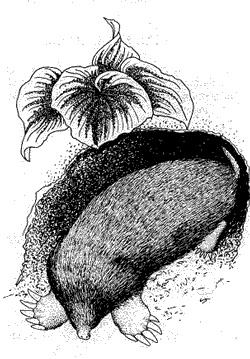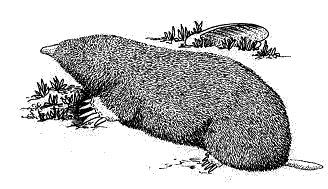Mole Damage to Look Out For
 |
Moles are only a problem if your lawn is sick. If your soil is compacted, the roots of the grass plants go down only about 2 inches. That is where the grubs and earthworms have to congregate, and therefore arrives the mole making tunnels that mar the appearance of the lawn
Moles can tunnel at a rate of 12 to 15 feet per hour. Since they are meat eaters, moles do not eat the plants. However, as they tunnel through the upper layers of soil in search of food, because your soil is compacted, they disturb the soil around plant roots. It falls away from the roots over the tunnels exposing them to air that dries them out. Grass turns brown, shrubs wilt and flowering plants collapse. Moles also damage plants indirectly because other critters such as shrews, field mice and voles use mole tunnels to gain easy access to bulbs and roots of the vegetables and flowers they love to eat.
Most Obvious Symptoms of a Mole
 |
Mole tunnels are most visible in lawns. They are raised ridges or humps, 3 to 5 inches wide. They are also hollowed out soil beneath planted beds which may be unnoticeable until digging causes a minor cave-in. Young spring vegetable and flower seedlings are destroyed. Usually the plants are merely uprooted, but at least one mole species, the Townsend mole of the Pacific Northwest, eats such things as tulip bulbs, root crops, and rhubarb plants.
Resident moles dig a fairly extensive set of tunnels over the season and deposit much of the dirt in mounds 6 to 10 inches high, creating the proverbial "mole hill". Many tunnels are used only once. The greatest damage to lawns and gardens seems to occur in early morning and evening when the moles are most active. Plant damage is most severe in dry weather, when plants whose roots have been disturbed are deprived of moisture. Raised areas of the lawn are more likely to turn brown. Because they are essentially solitary animals, it is likely that only one or two moles are responsible for the damage in an individual yard.

